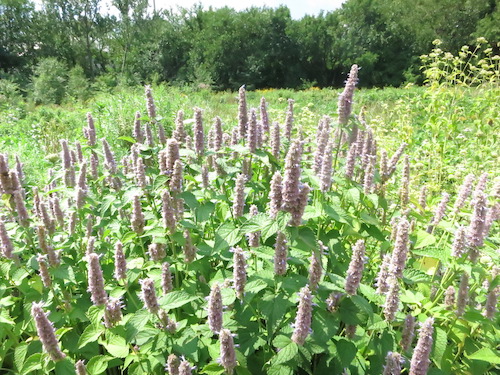Beginning in 1801 and for 165 years, the Brooklyn Navy Yard built the United States' most celebrated warships. Today an incubator of industry, home to a movie studio, and site of a brand new stop on the NYC Ferry, the Navy Yard remains a repository of important American history. But as the Navy Yard revives, new things are cropping up frequently. The latest is the Naval Cemetery Landscape, a peaceful and distinctive natural area on the site of the former Brooklyn Naval Hospital Cemetery.

More than 2,000 people, mostly military men, were buried here from 1831 to 1910. The Navy moved many of the bodies to Cypress Hills National Cemetery in 1926, but many more likely still lie beneath this ground. For that reason the Brooklyn Greenway Initiative built the new walkways as raised boardwalks. Nonetheless you feel enveloped in, rather than above, this "wildflower meadow and sacred grove."


While you are walking through a site consecrated to the dead, the ground before and around you teems with life. Says the website: "Initially established in a strict geometric arrangement, the plantings will eventually drift across the site, creating new patterns and establishing a self-sustaining, ‘open-ended’ ecology intended to draw people, birds, moths and bees in a rich celebration of life."


A line of stone blocks runs through the meadow, unexplained. A remnant of the cemetery? To reach it, you'd have to descend, probably up to your waist, into the meadow, probably get scratched up, and probably become a feast for ticks. We shall remain content to leave the blocks a mystery.

There's also a miniature set of amphitheater seats, where we sat and meditated along with a "sound bath" created for the purpose and released on Instagram in July. The rush of the nearby elevated Brooklyn Queens Expressway means the Naval Cemetery Landscape will rarely, if ever, be a silent place. But a peaceful oasis it is.
We got there by taking the NYC Ferry to the Brooklyn Navy Yard dock. It's a bit of a walk from there, as it is from the G train, but that's all to the good: This is a place much better visited without a crowd.
All photos © Jon Sobel, Critical Lens Media